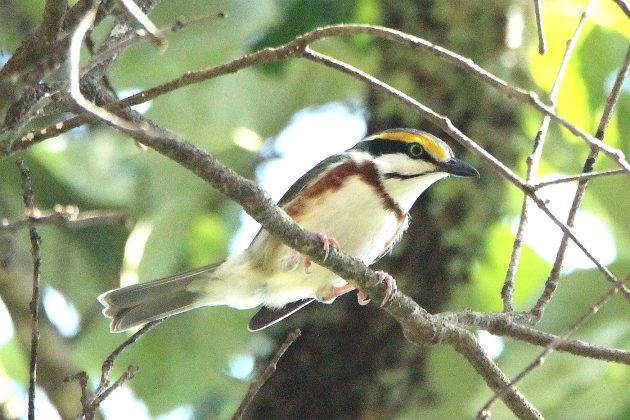
We had dear guests from the Middle East staying with us on Monday, my usual birding day. So this week, instead of writing about my latest outing, which did not happen, I will talk about a few of my favorite birds. These species are not only beautiful or charming, but have a personal resonance for me. I am sure each of our readers also have certain birds which mean the most to them; in fact, I would love to hear about yours in the comments below.
Black-vented Oriole: trigger bird #1
It’s an unnecessarily long story as to why I first put a birdbath in my backyard. But suffice it to say that when a Black-vented Oriole turned up for a drink, I realized I wasn’t in Kansas anymore. (Or, more exactly, I wasn’t in California, and then Baja California, any more.) These orioles turned out to be common in our area, and often visit my garden, but they still have a place in my heart.

Gray Silky-Flycatcher: trigger bird #2
It wasn’t long before I started checking out birds in the nature reserve on the other side of my neighborhood. One day I was trekking the reserve with my adult son, and a flock of Gray Silky-Flycatchers flew close overhead to a nearby fruiting tree. We were entranced, and my interest in birds increased. I soon bought a cheap pair of binoculars. They were of terrible quality, and soon broke. But they did serve as a gateway birding drug.

Squirrel Cuckoo: Somebody else’s trigger bird?
I was in that same nature reserve, when a Squirrel Cuckoo turned up on the side of the main path. Since Squirrel Cuckoos are 15 in/37 cm long, and awesome, I had to point it out to a passing father and son — the only people around. The boy shouted “¡Qué padre pájaro!” (What a cool bird!) as he gazed at it. Perhaps my first convert?

As an added point in this bird’s favor on my favorites list, this photo of mine is currently on the Merlin app.
Chestnut-sided Shrike-Vireo: I get game.
Around 2011 or 2012, I discovered an online forum of a rather select group of Mexican birders. For some inexplicable reason, they accepted me in their forum, allowing me to subject them to a series of dumb beginner’s questions and bad ID photos. But when I put up a bad ID photo of a Chestnut-sided Shrike-Vireo, I suddenly found that I too had something to offer. It turns out this species is very difficult to see — everywhere except in my territory, since to date I have now seen it 64 times within an hour of Morelia.

Sinaloa Martin
By 2015, I had discovered the tiny town or Paso Ancho, Michoacán, as my nearest option for seeing the many endemics of Mexico’s Hot Country/Tierra Caliente. I had the good luck to make my first visit in July, and to manage passable photos of some of the swallows and swifts wheeling overhead. Many of them turned out to have strikingly dark backs, with a bright white bellies. These were Sinaloa Martins, a large swallow so rare that even today they only appear on 161 eBird lists. Up to that point, these had never been reported for the state of Michoacán. But now, about a quarter of all these reports, and more than half of all photos, are from this one site. And if the Chestnut-sided Shrike-Vireo allowed me to host some great birders, the Sinaloa Martin has done so twice as much.

An early photo of mine, which is also still to be found on Merlin.
Hudsonian Godwit
Now this is a bird that needs no personal backstory to be special. (But I will still provide one.) It breeds on the shores of the Canadian and Alaskan Arctic, then gathers around the southern arm of Hudson Bay, to fly non-stop all the way to the southern tip of South America. Only on its way north in late spring does it stop at different points to rest and feed, mostly near the western shore of the Gulf of Mexico.
In May of 2018, I included some rather sad photos of what I had identified as a group of 6 Long-billed Dowitchers in my eBird report for Lake Cuitzeo. To my great good fortune, one of Mexico’s best birders happened to look at that report and notice the upswept bills and plumage patterns on these birds. Further manipulation of these photos showed that these were not dowitchers, but Hudsonian Godwits, showing up much farther west than they had ever before been seen in Mexico.
Even better, in 2022 I was able to take much better photos of a single Hudsonian Godwit, not too far from my original sighting. I now suspect that this species is often a possibility for Lake Cuitzeo during the month of May. I could not test this theory in 2024, as by that month the lake had disappeared. But since this year’s rainy season has started with 15 continuous days with rain, I have high hopes for May of 2025.

I also hope to see this year’s crop of Sinaloa Martins this coming Monday. I’ll keep you posted.













A very worthwhile set of favorites, Paul and amazing pictures.